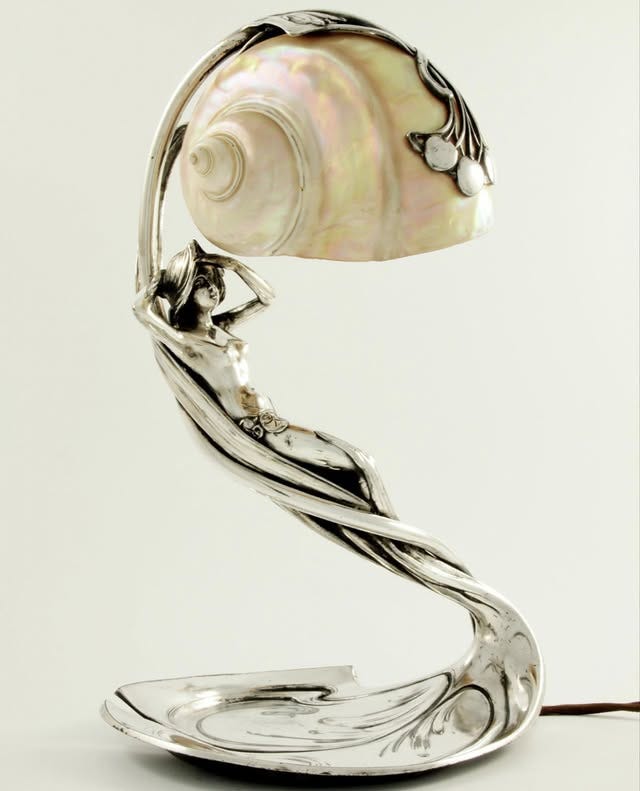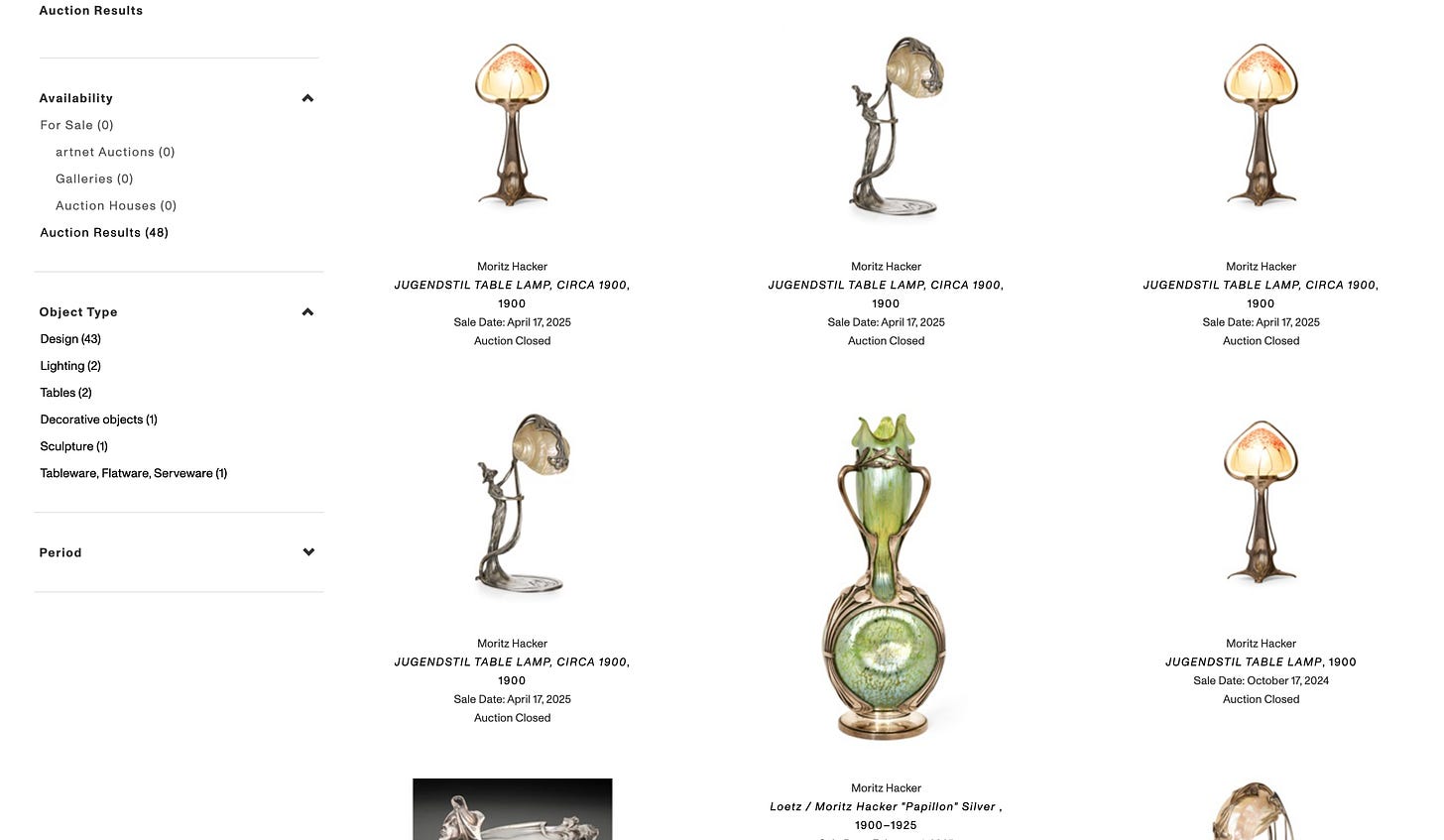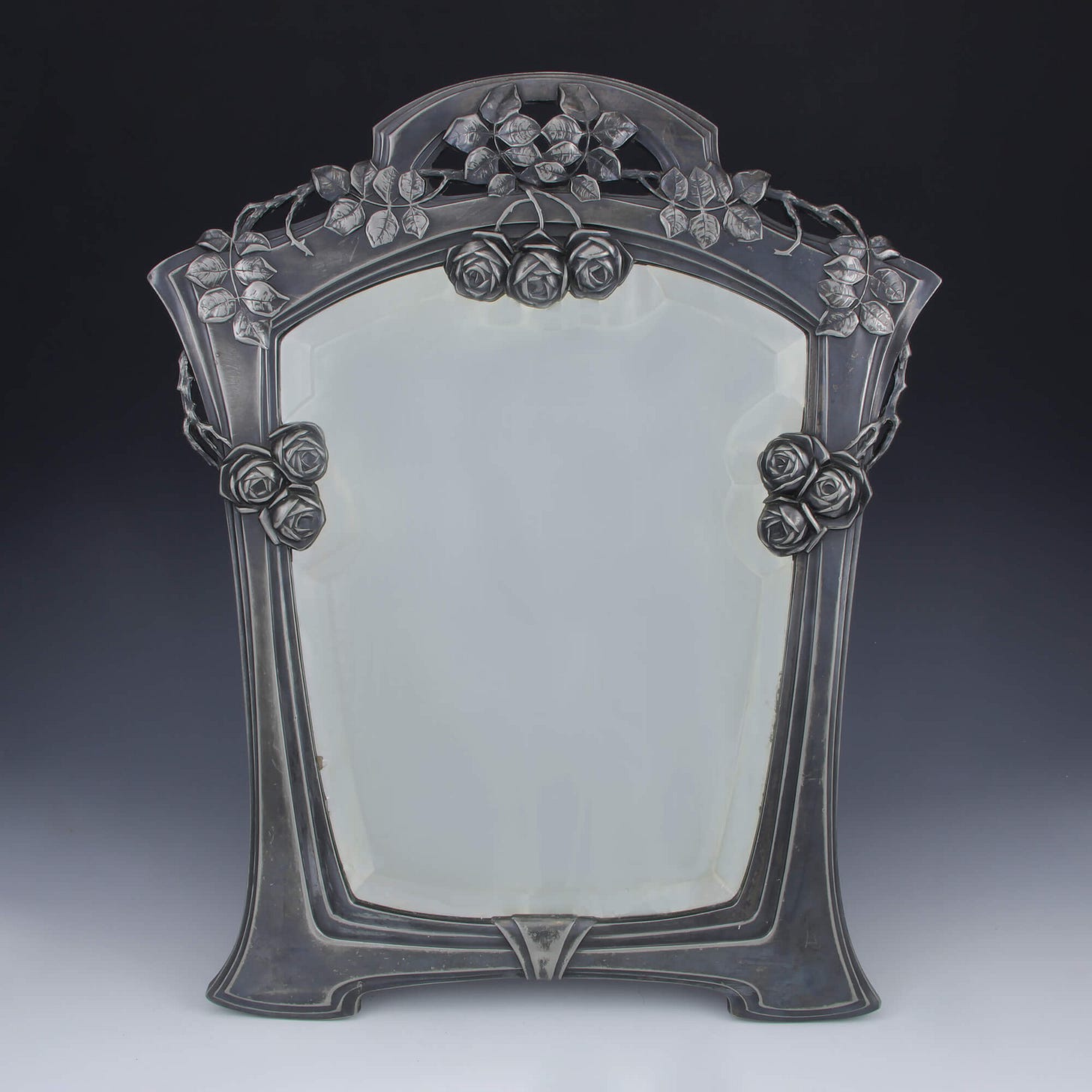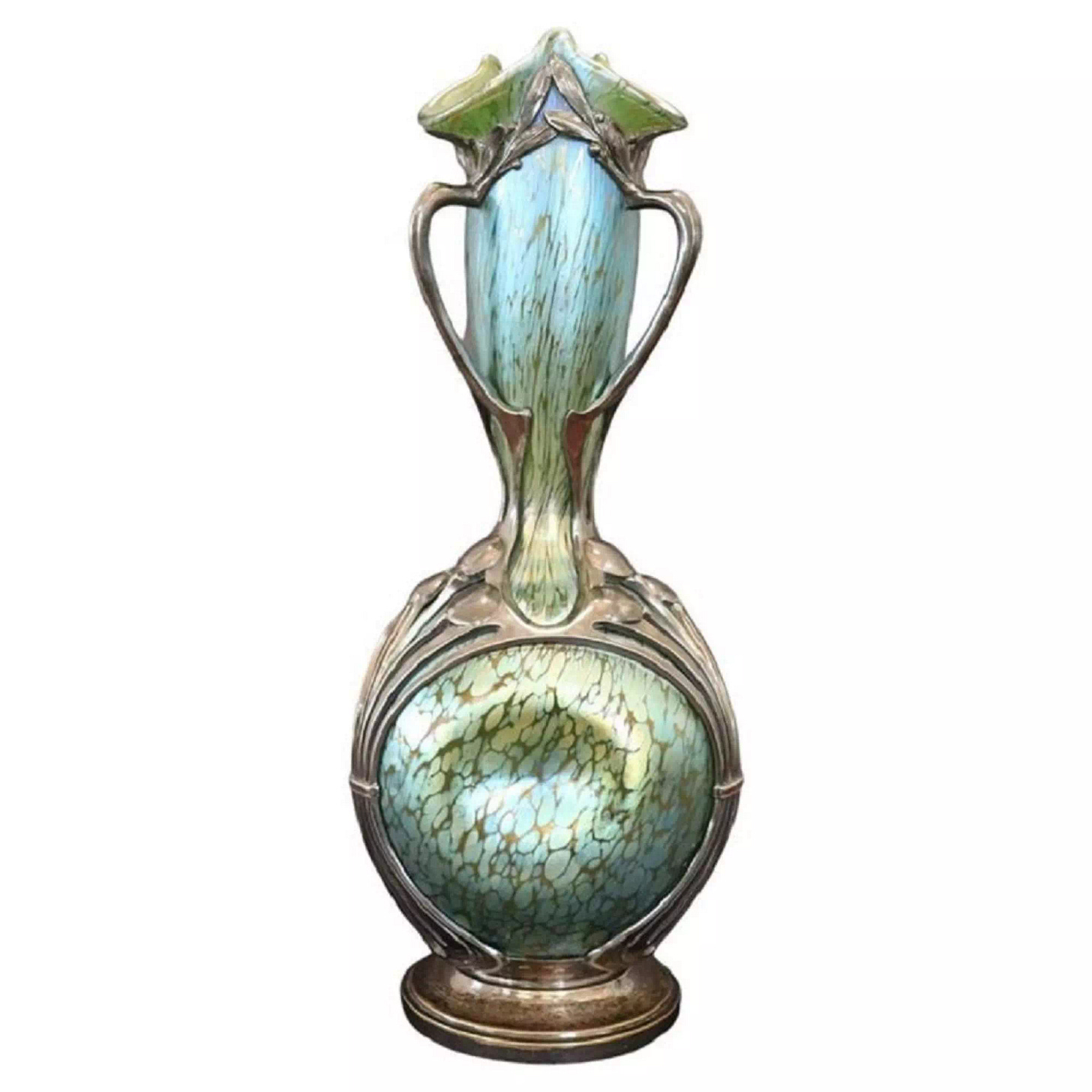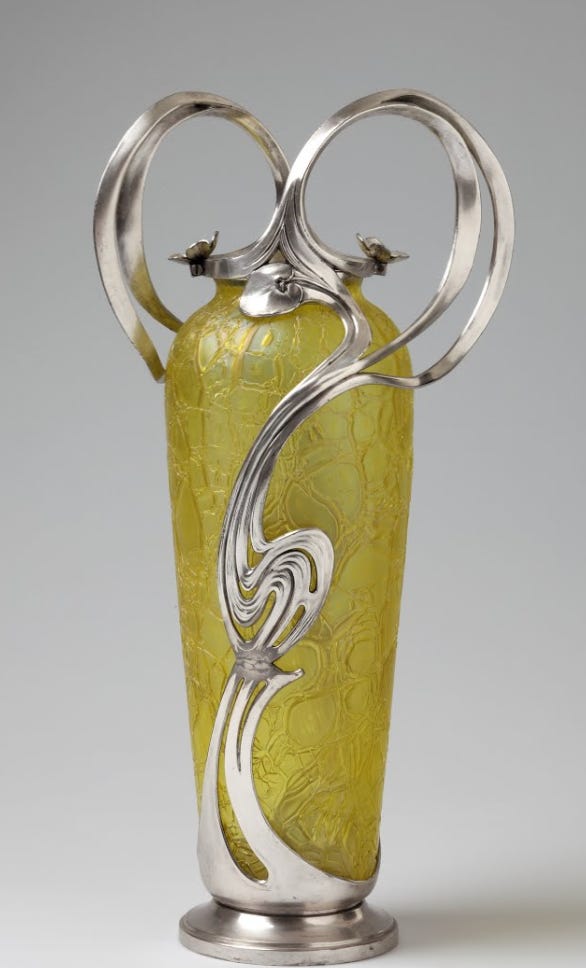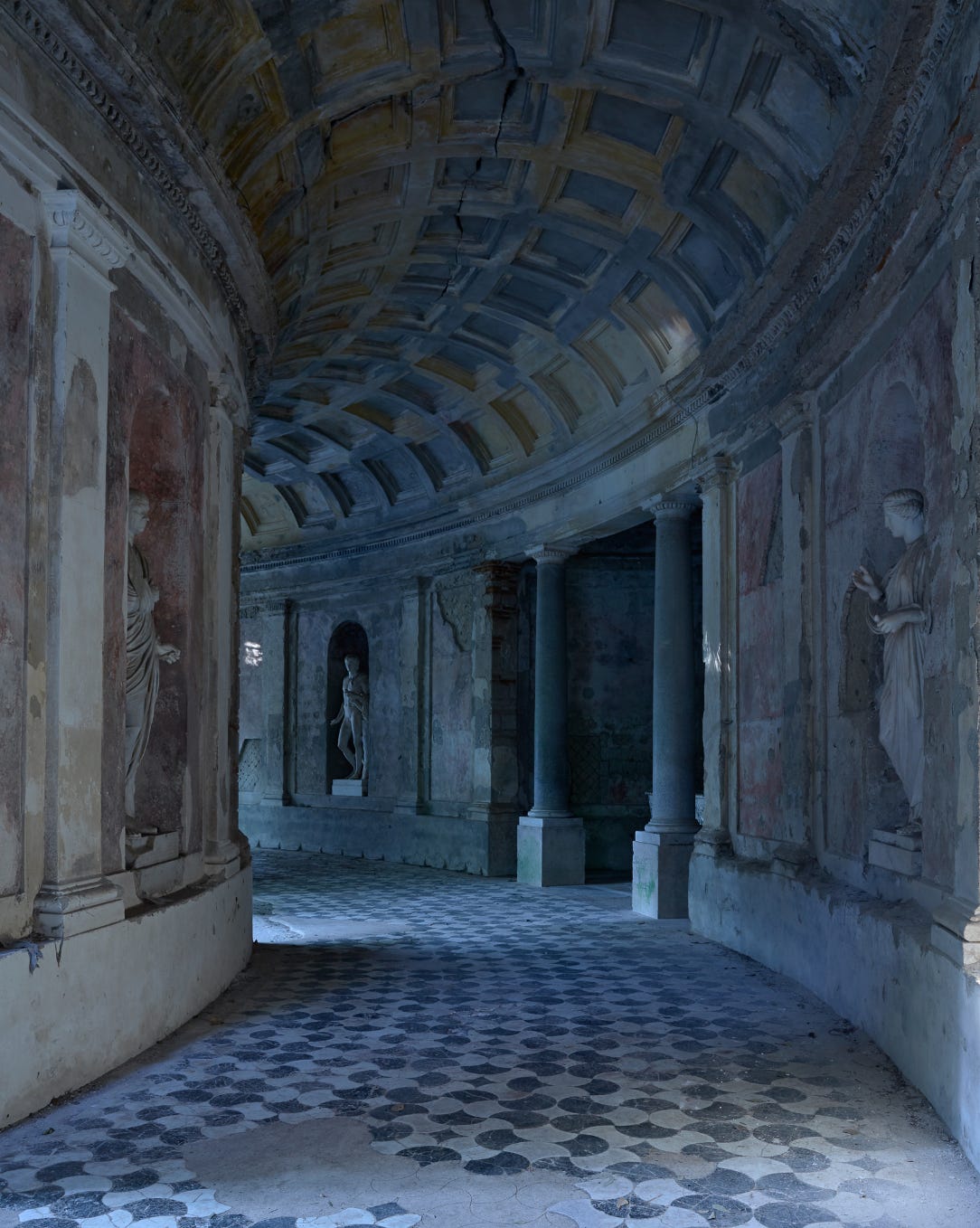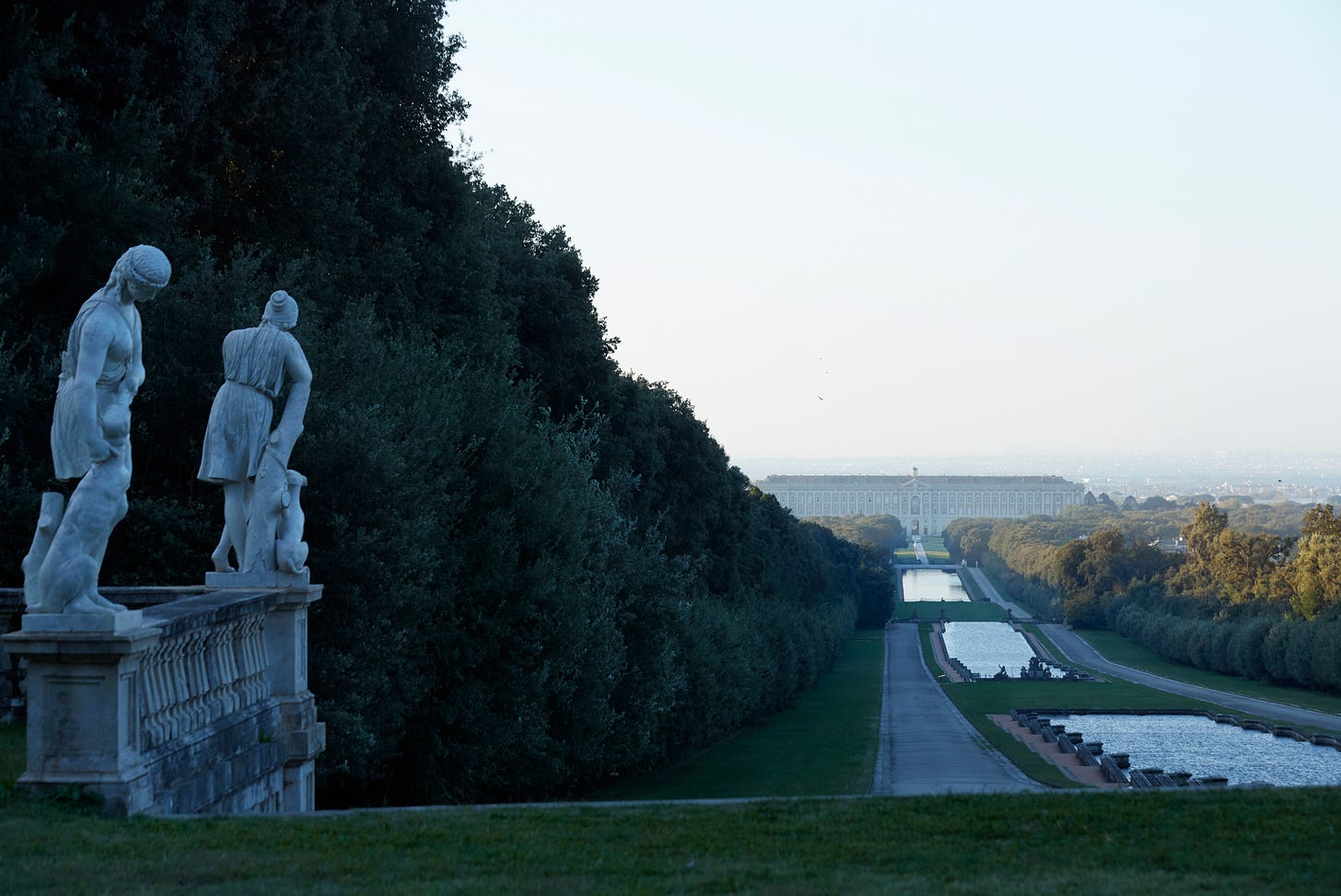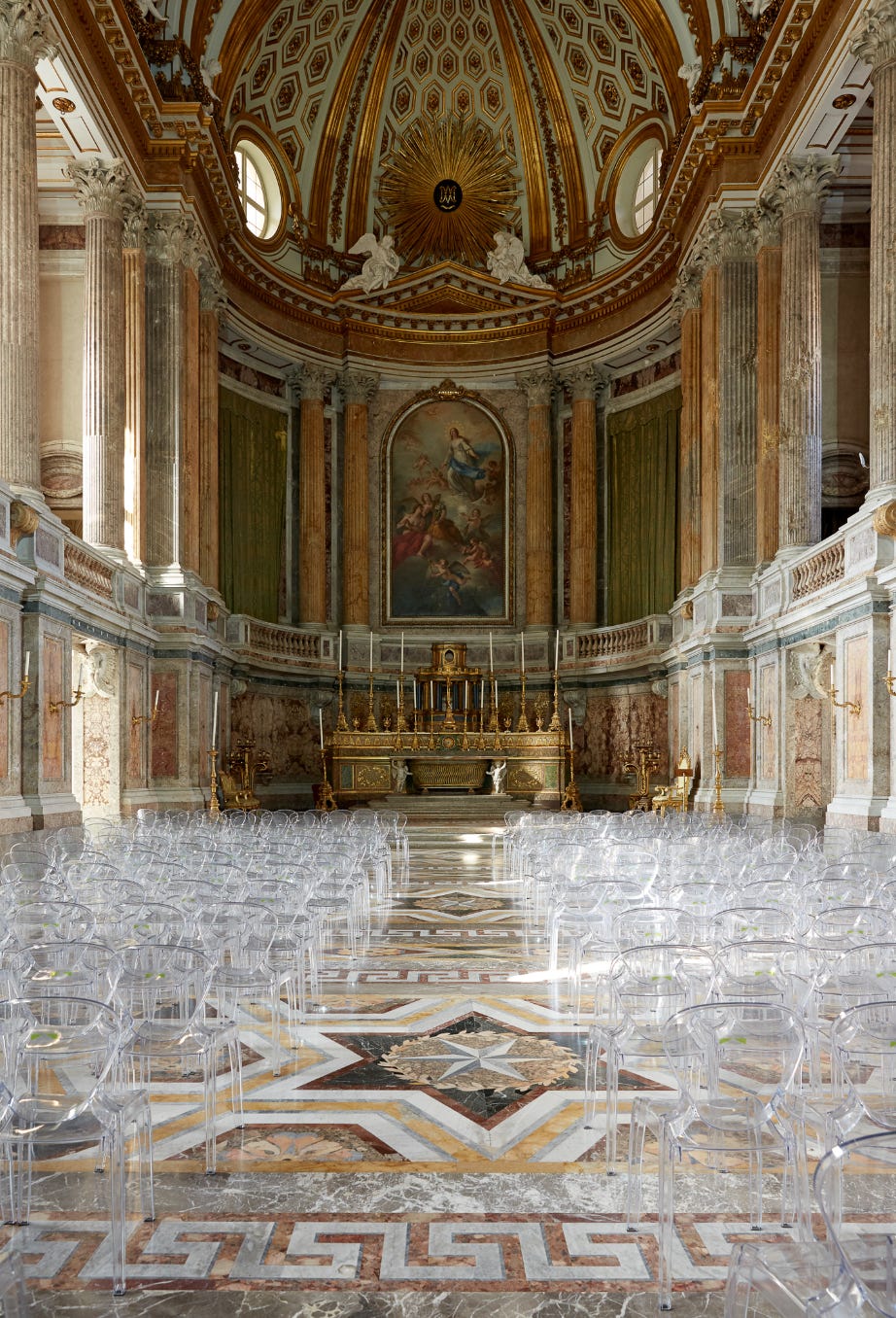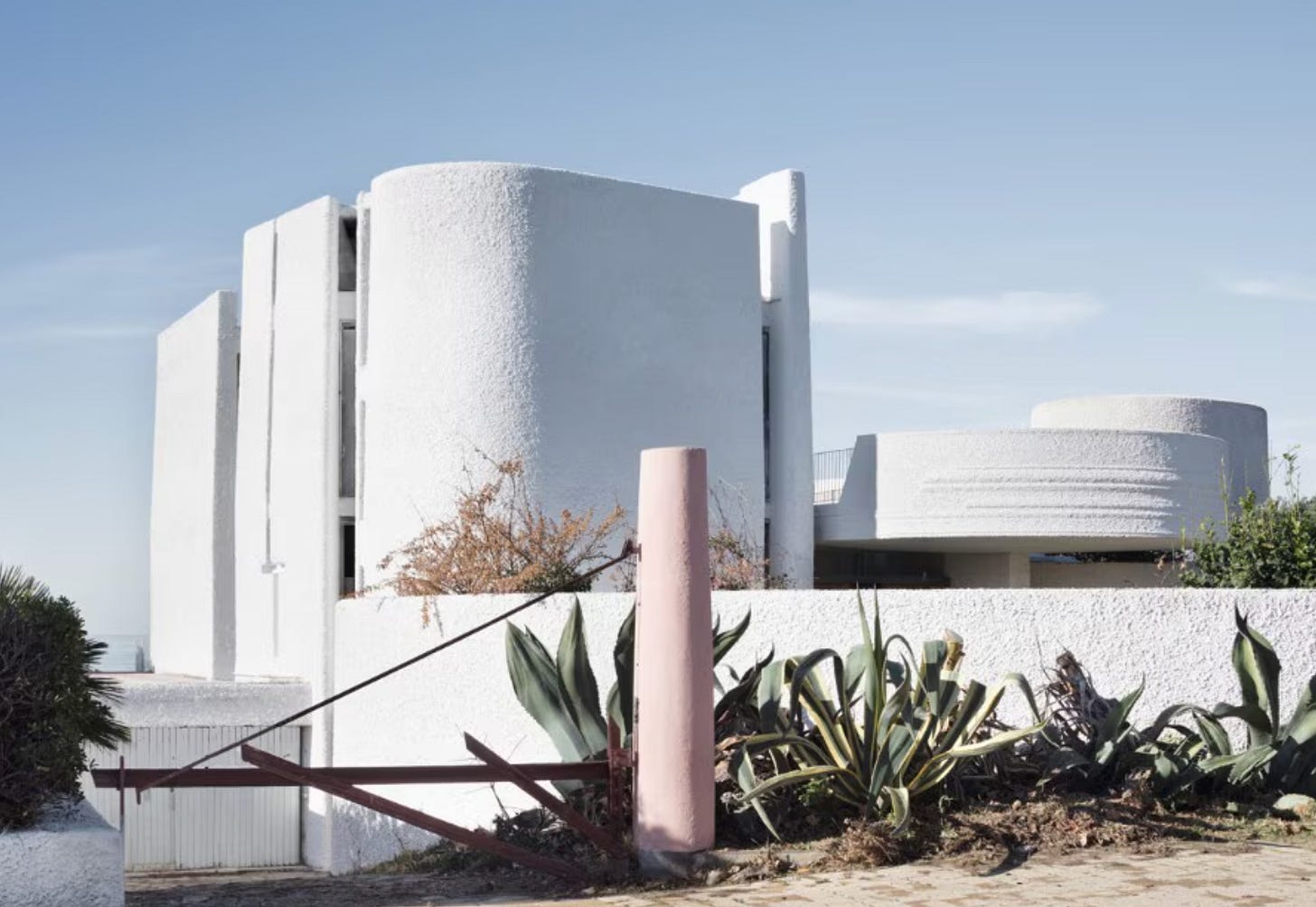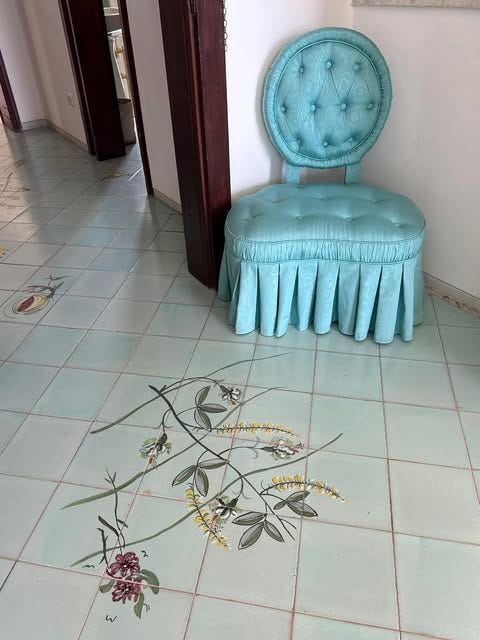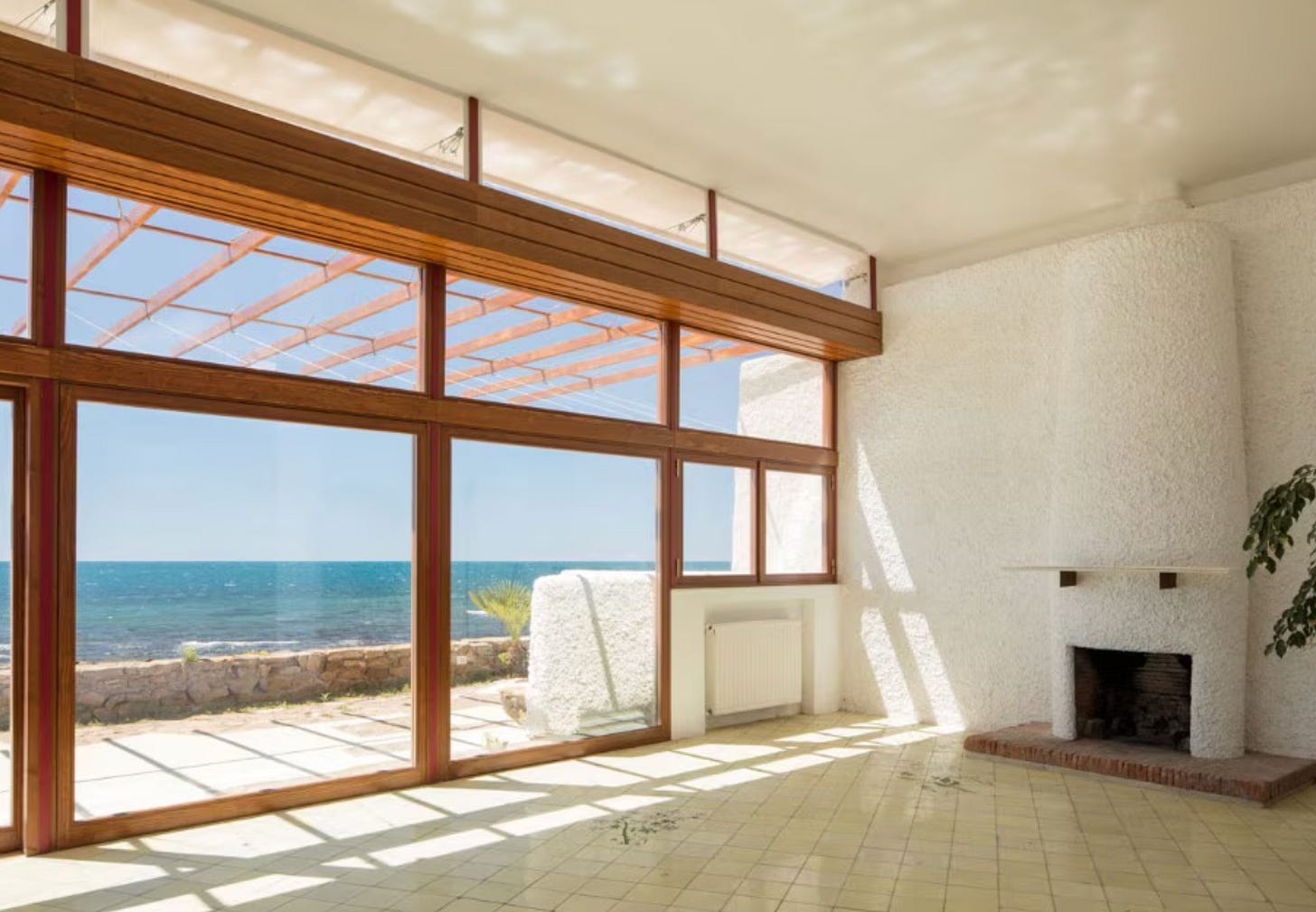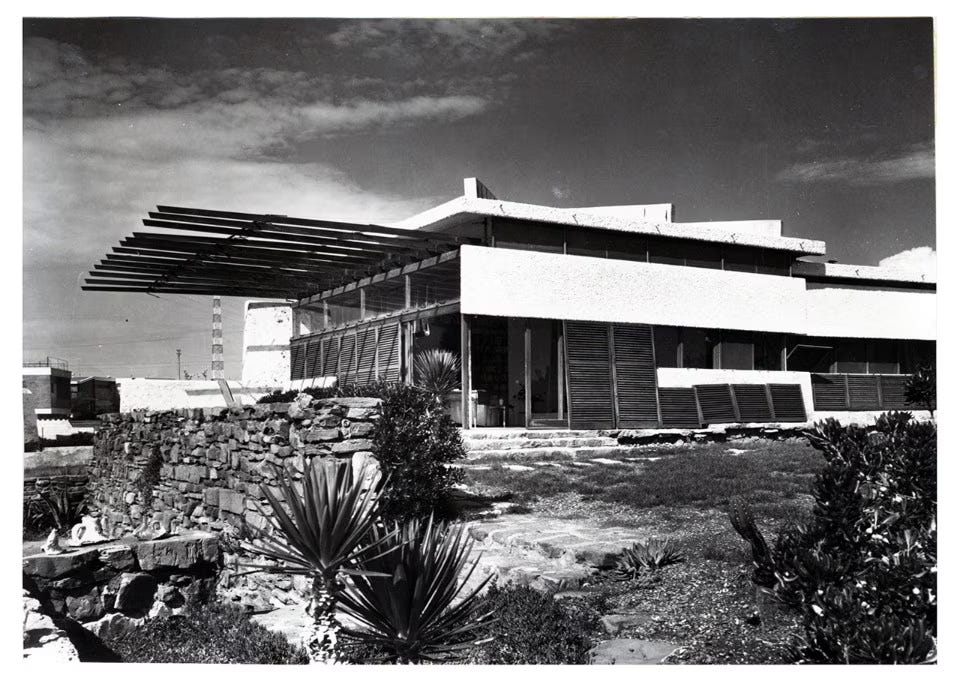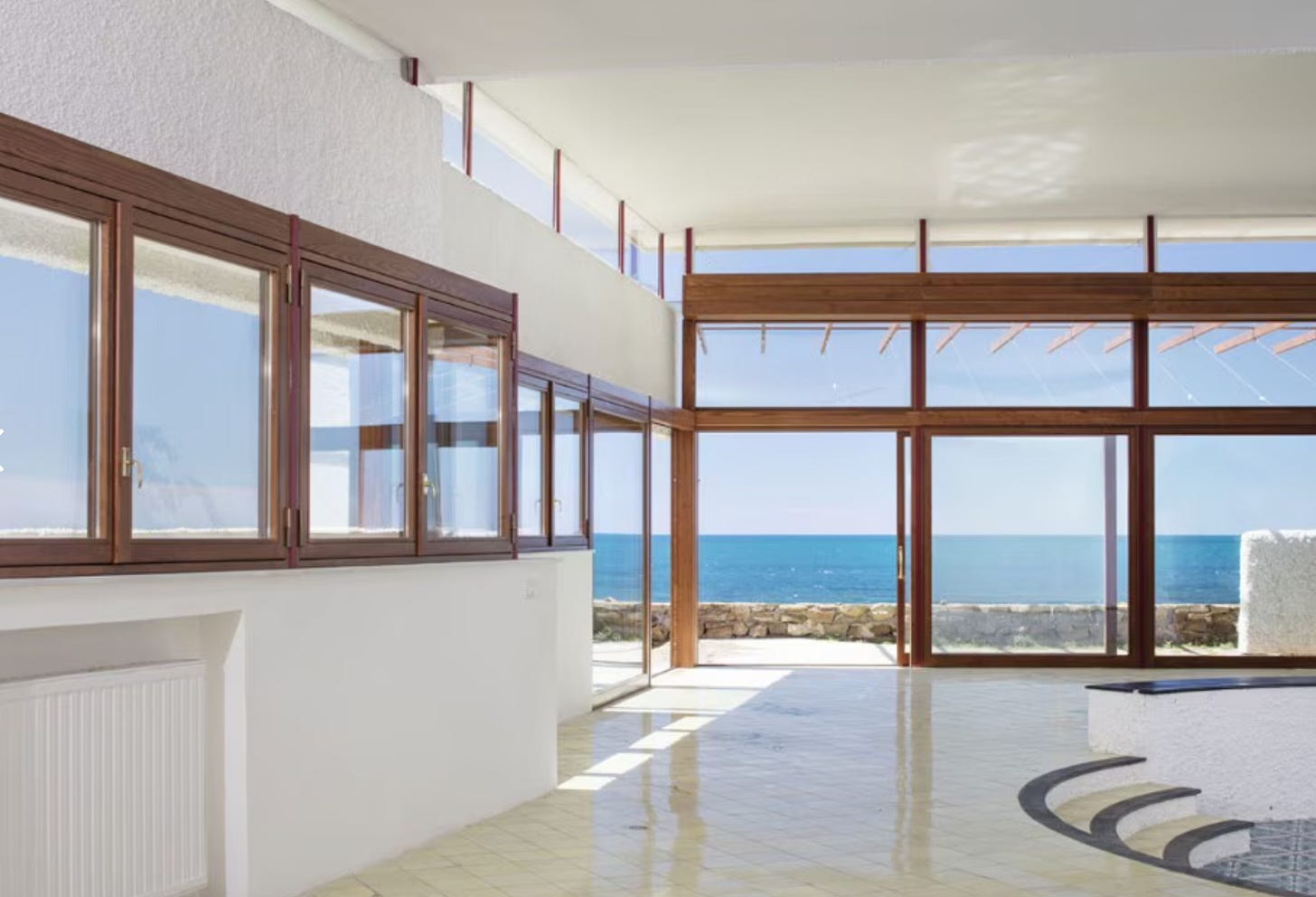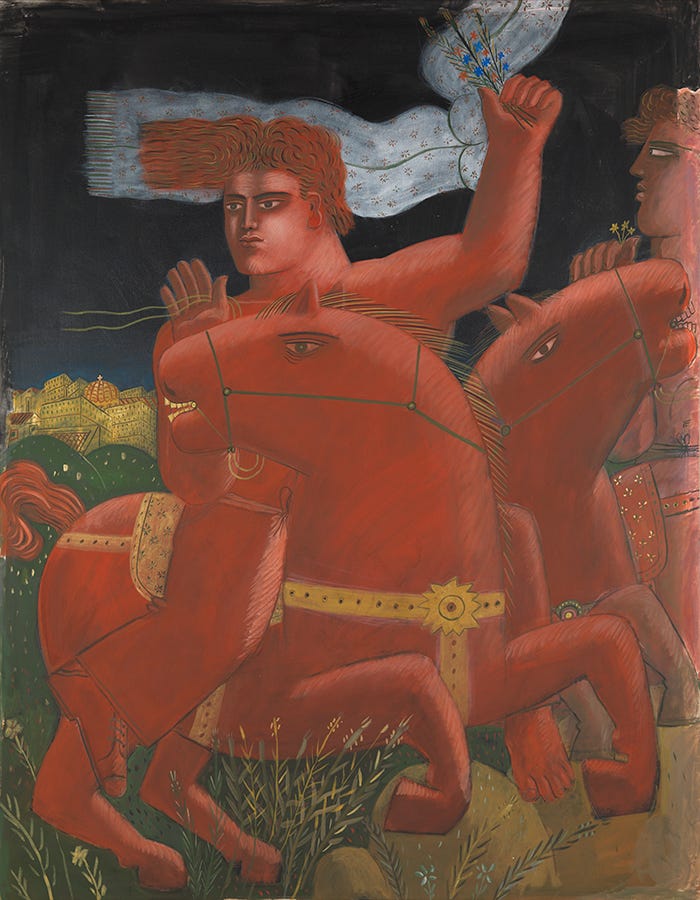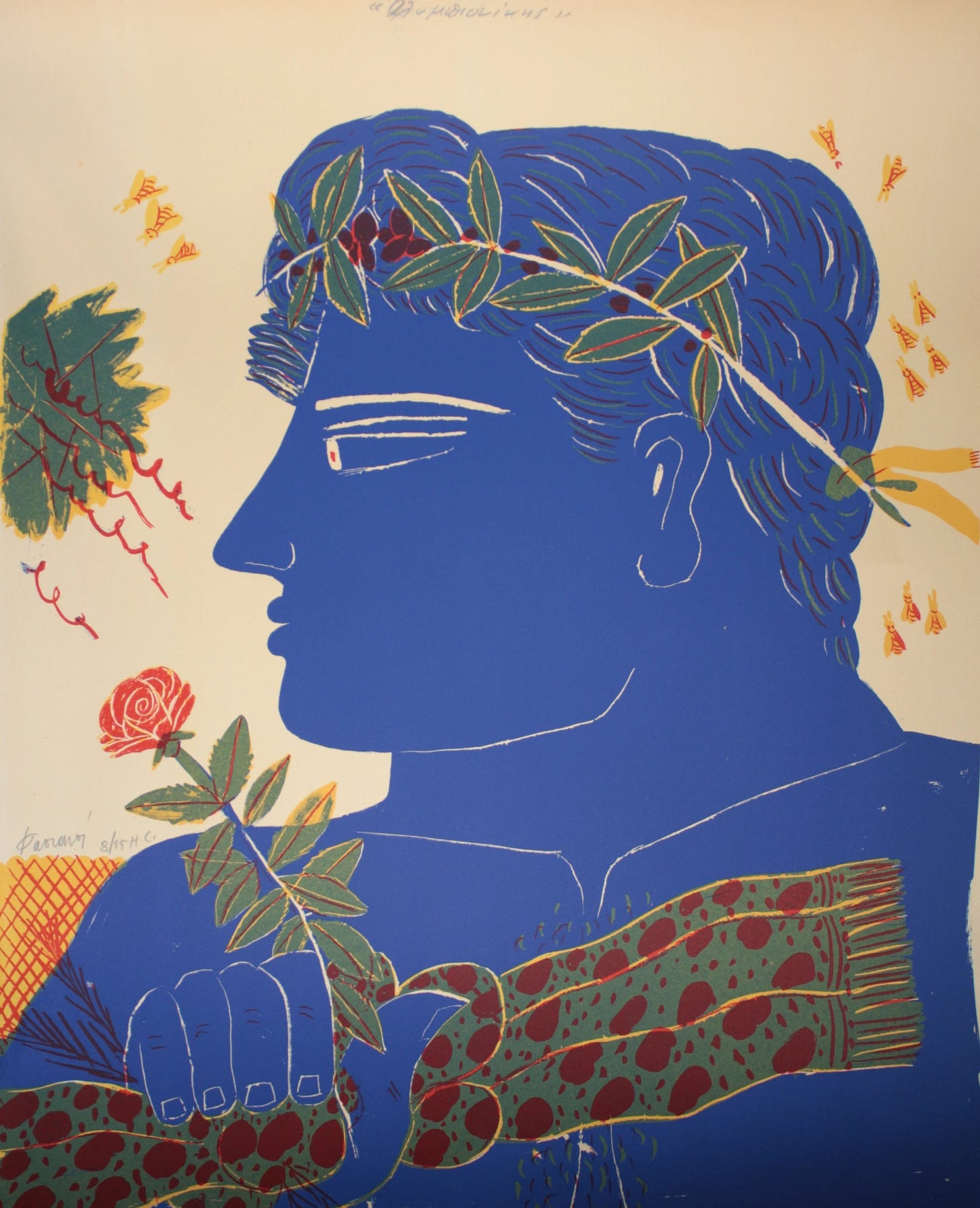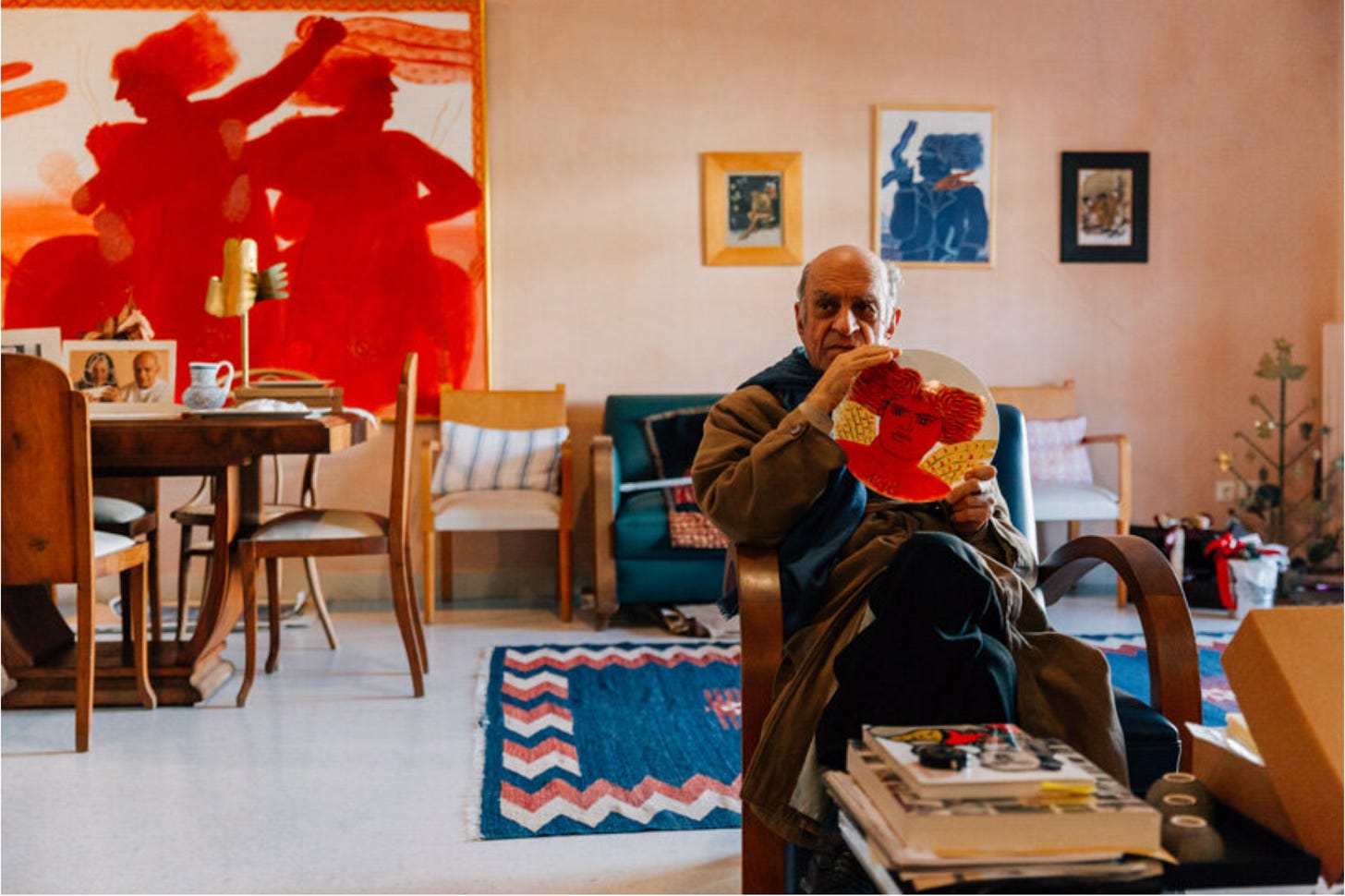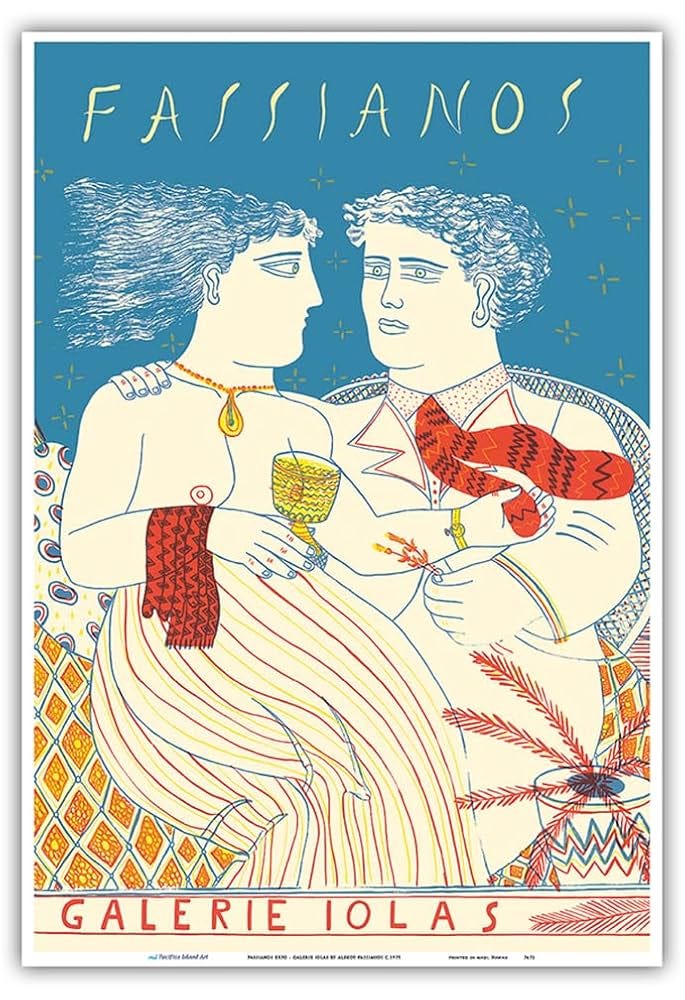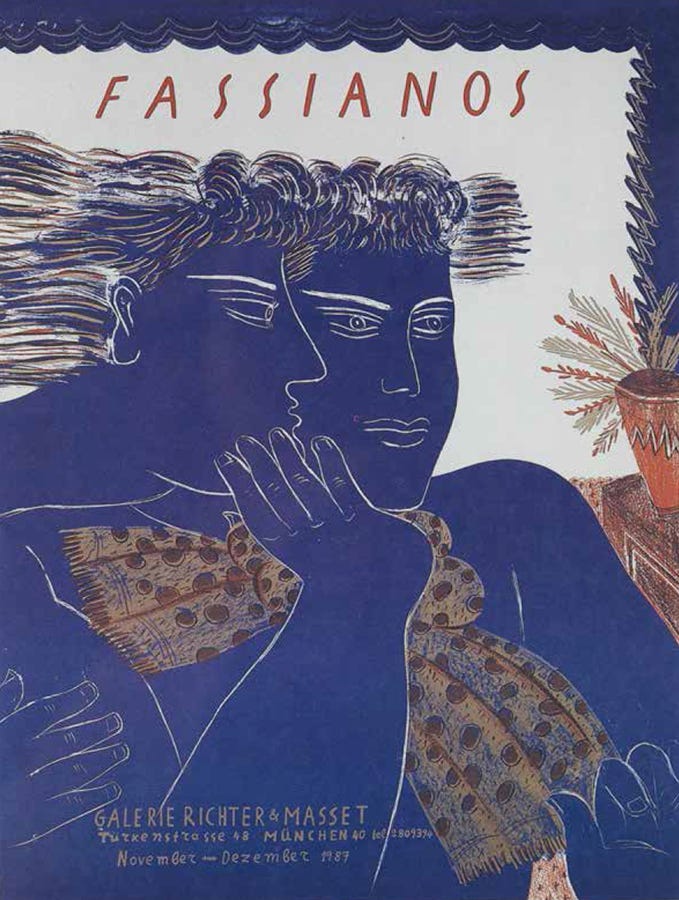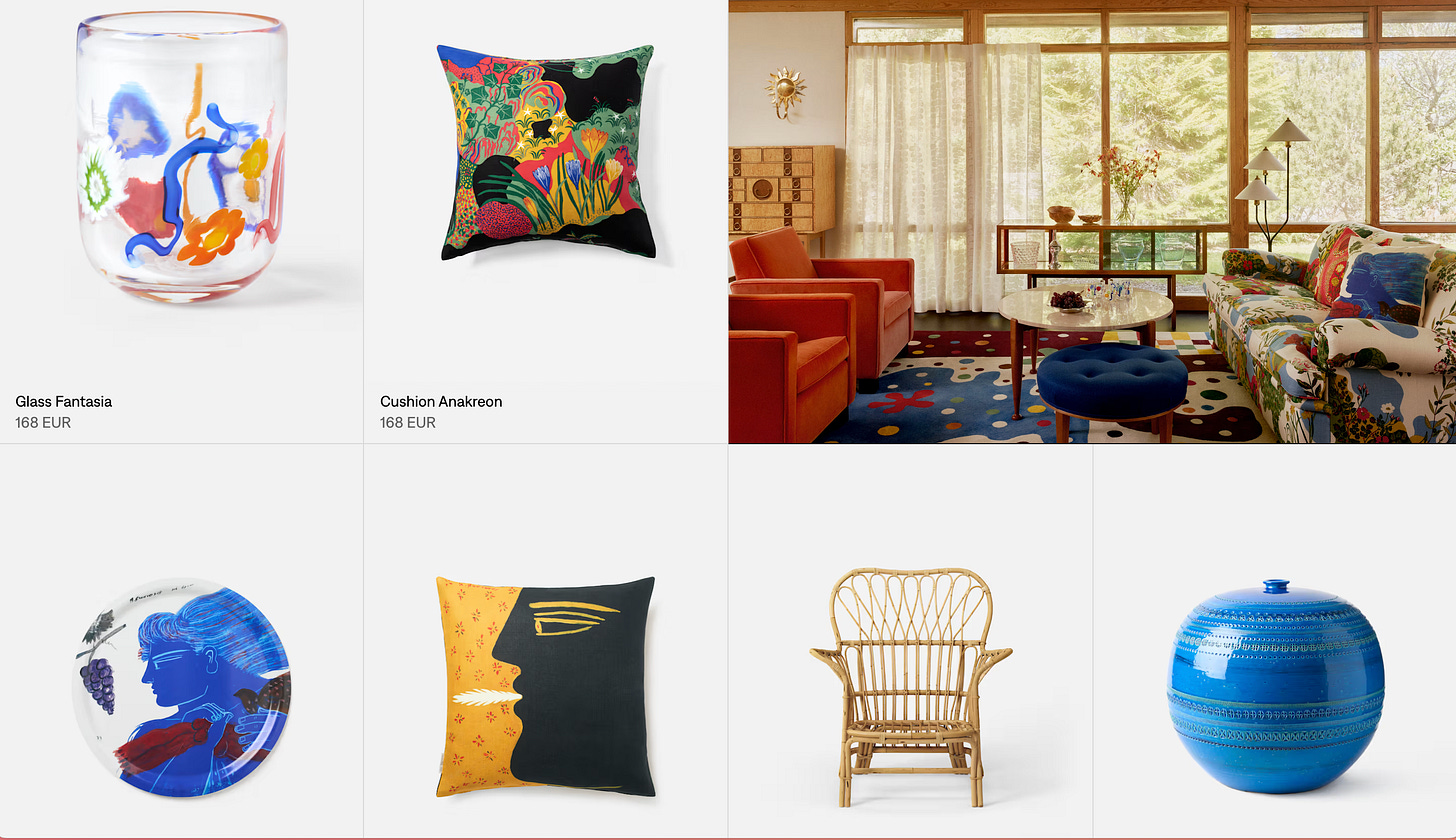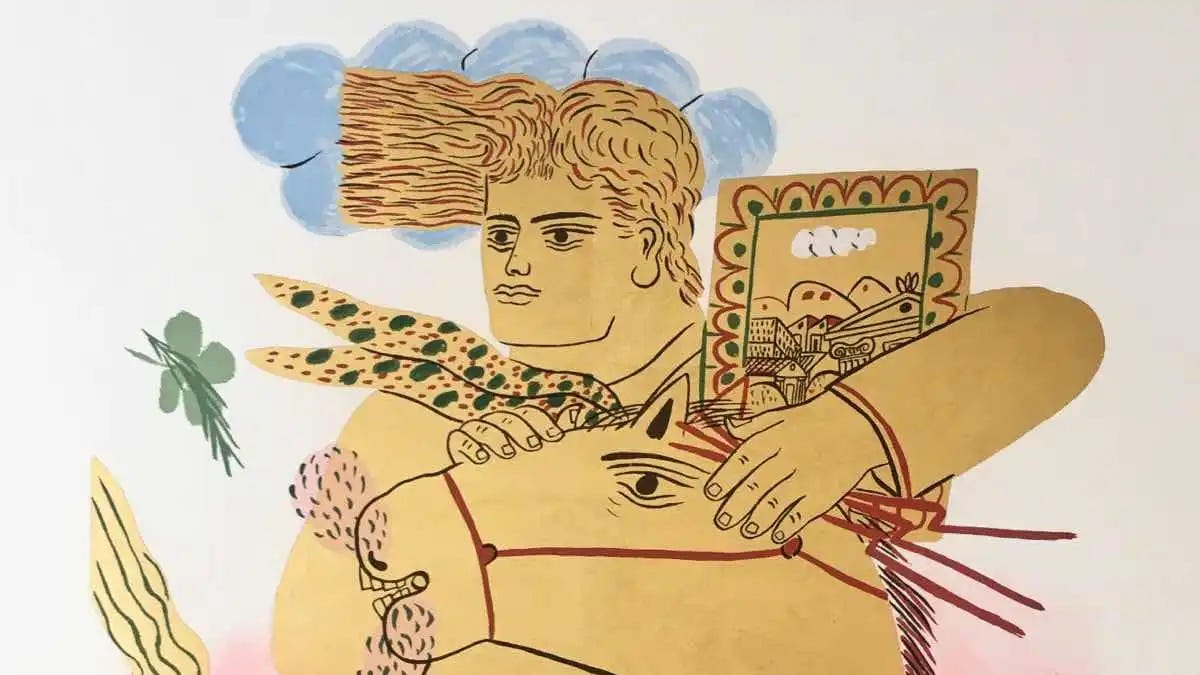Weekly Design Roundup – Art Nouveau seashell lamps, a magical Neapolitan palace, and an intro to the Greek Picasso
🌀🌀🌀 A very Mediterranean themed week. So get your bathing suit, pour a Campari, and enjoy the seaside offerings.
A sun-drenched⋆ .𖥔˚Weekly Design Roundup˚𖥔. ⋆ for your Tuesday evening
꩜꩜꩜ This email is likely too long to read in your inbox - open the post in a web browser to read the entire thing!
Life has been a tad busy. Work has been more than a tad busy. On the life side of things, I’ve been enjoying exploring quite a few design gems in person these past weeks. Not to spoil future Artifices (plural of Artifex, since I know you were wondering) but I diiiiiid visit both Eltham Palace and Strawberry Hill House in person this weekend and am already dreaming up two juicy ON THE GROUND posts.
But here we are on a Sunday with a train ride to Oxford to kill and more than a few pieces of design inspiration floating around my head from the past week. So let’s call it a challenge. Just over an hour and four threads to follow to their completion. Adiamo. (Managed to write 75% of this as we now pull into the station - not bad for a girl with debilitating motion sickness).
Art Nouveau lamps by Moritz Hacker
Like so many good rabbit holes, this one started on Instagram where I first saw this post of a mesmerising sea-shell lamp in gilded silver, supposedly crafted by the artist Moritz Hacker from Vienna.
Posted by hauteville_paris, a must-follow Instagram treasure-trove, I immediately started Googling Hacker in a fervent attempt to track down more of these wonderful Little Mermaid-esque creations.
After some deep, deep Googling, I finally found a bit more information on the elusive designer who, it turns out, was actually a design firm operating in Vienna at the end of the 19th century and specialising in Art Nouveau interior decoration.
Moritz Hacker, [a Viennese decorative arts firm], worked closely together with Loetz Witwe firm, which was specialised in glass design. Moritz Hacker was founded in Vienna in 1882, and then it was constantly in the ascendant, producing various decorative and use objects of glass and china put into metal holders. It often sold its objects in the Austro-Hungarian area, and exported to the Balkans, to all European countries and to Mexico. According to current knowledge, their products were sold in Zagreb by watchmaker and jeweller Josip Engelsrath.
Moritz Hacker didn’t only make lamps but also mirrors, vases, and other decorative interior objects. However, from perusing ArtNet and other auction forums, their nautilus shell creations seem to be the most sought-after pieces today.
While the glasswork is stunning, I am still partial to the shell lamps. I feel like the twining silverwork perfectly evokes the natural curves of the nautilus shells.
Hacker’s half nature half objects remind me of the moment of magical transformation in Cinderella where the pumpkin gets turned into a carriage, the mouses into horses, and the vines into wheels. Something tells me the fairy godmother would have approved of Hacker’s designs…
But which lamp is your favourite?!
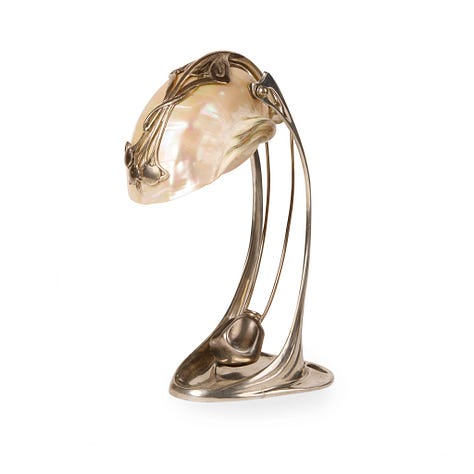
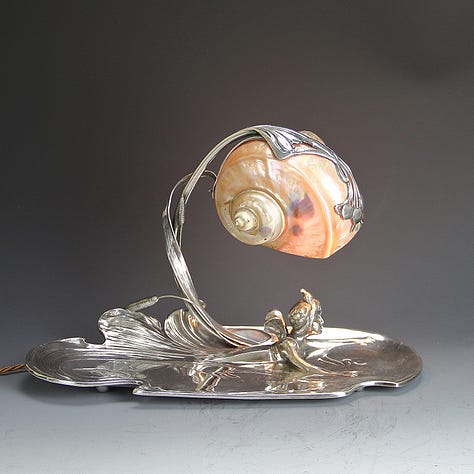
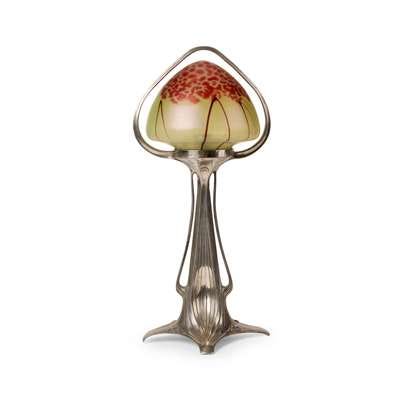
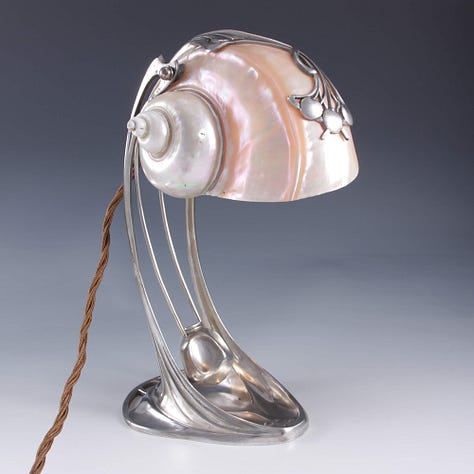
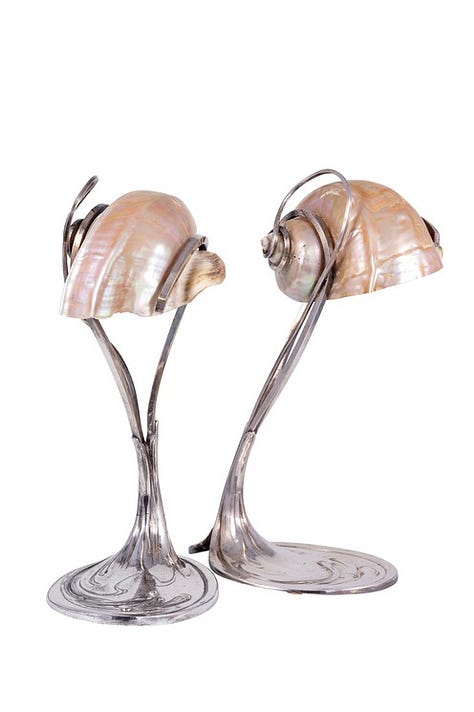
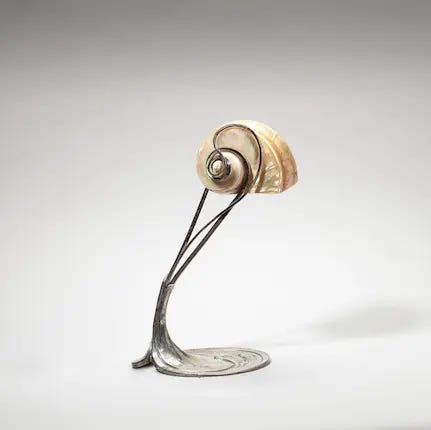
Royal Palace of Caserta
This design rabbit hole began with a palazzo then led to a slightly smaller palazzo and ended with a more than slightly larger palazzo.
I was reading this article on Piero Castellini Baldissera and his ancestral family home, Casa degli Atellani, in Milan which led me to this article discussing Nicolò Castellini Baldissera (Piero’s son) purchasing and designing his own apartment in the city.
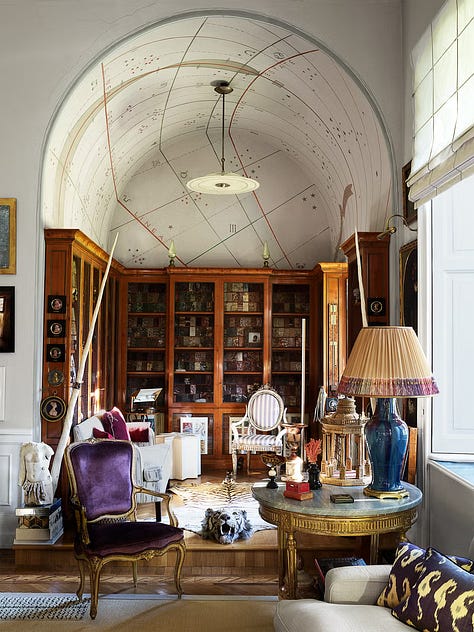
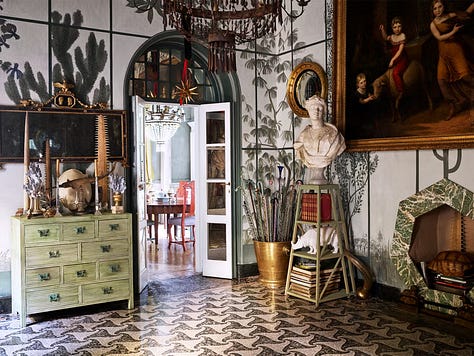
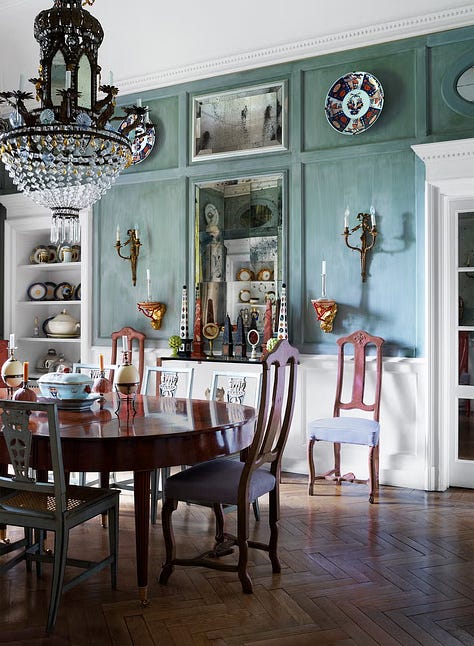
Nicolò’s apartment was shot by the photographer Francesco Lagnese whose personal, antique-feeling shots immediately drew me in. So while I could have written an entire post exclusively on the Baldiserra family (tldr: Renaissance master architects who rubbed shoulders with Leonardo da Vinci), I actually want to discuss Lagnese and his photographs of a different palazzo entirely - the Palazzo Caserta.

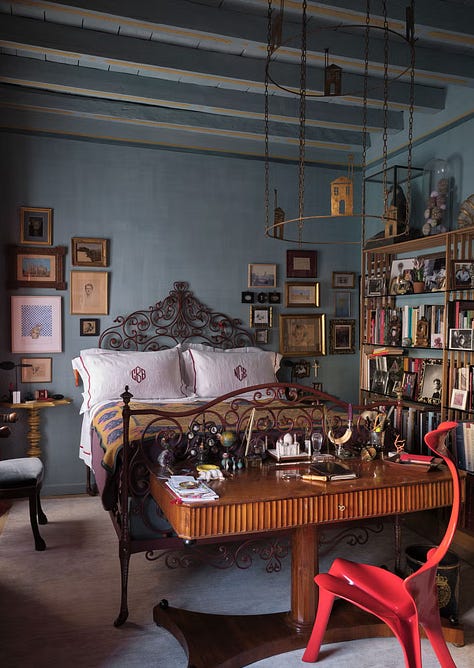
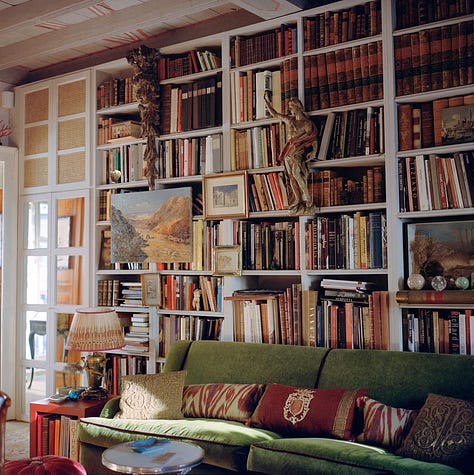
In scrolling through Lagnese’s personal website of his work, I stumbled across this image which I realised I had seen a couple times before floating around my Pinterest. The caption informed me that it was a photo of the Caserta Royal Palace – a palace I had absolutely never heard about in my life.
So down the rabbit hole I continued. Turned out the Caserta Palace is kind of a big deal - figuratively and literally. It is, according to Wikipedia, the eighth-largest palace in the world, and the “largest royal palace resulting from a single original project in the world in terms of volume, with more than 2 million m3.”
Okay, so who the hell built it?! Built in the mid 18th century, the palace was the former royal residence in Caserta, a town outside of Naples (think Versailles relative to Paris), constructed by the House of Bourbon-Two Sicilies as their main residence as kings of Naples.
Quickfire history lesson on the Kingdon of the Two Sicilies and the construction of the palace.
The Kingdom of the Two Sicilies was a kingdom in southern Italy from 1816 to 1861 under the control of the House of Bourbon-Two Sicilies, a branch of the Bourbons. The Bourbons, originally a French royal family, eventually came to rule Spain in the 1700s thanks to sweet, sweet medieval intermarriage. The kingdom was the largest state in Italy before the Italian unification, comprising Sicily and most of southern Italy.
The construction of the palace began in 1752 for Charles VII of Naples who later became Charles III of Spain who worked closely with his architect, Luigi Vanvitelli. Vanvitelli modelled Caserta after Versailles, creating a small city that housed the king, court, and government in a single massive building with extensive, manicured gardens. The palace was finished under Charles’ son, Ferdinand IV of Naples and remained in use until Italian unification.
The palace is absolutely astonishing in its scale. And the way that Lagnese captures the slightly mythical quality of such a space left me breathless. Scrolling through his Caserta gallery feels like you’re actually there in sun-drenched southern Italy, having stumbled on a palace frozen in time.
The crumbling follies and neo-classical temples dotting the lush gardens are a particular favourite. I really do love a sexy, crumbling ruin.
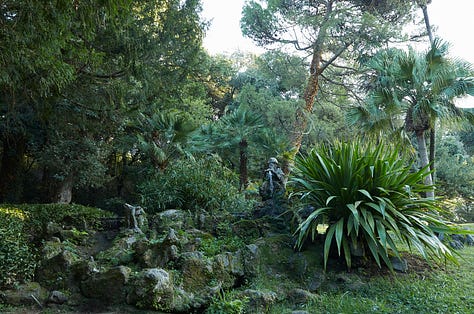

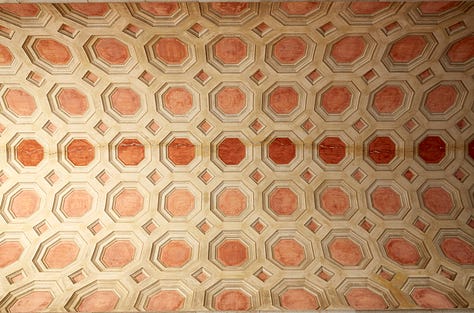

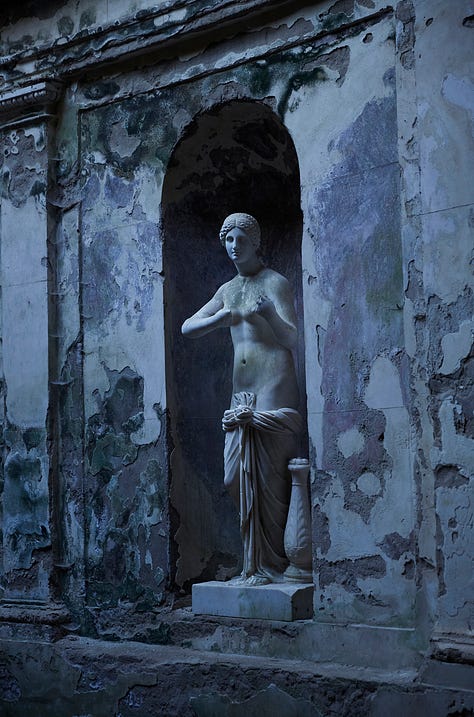
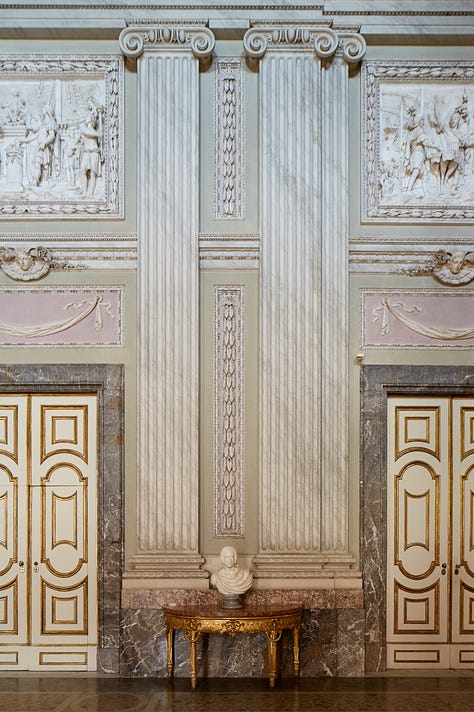
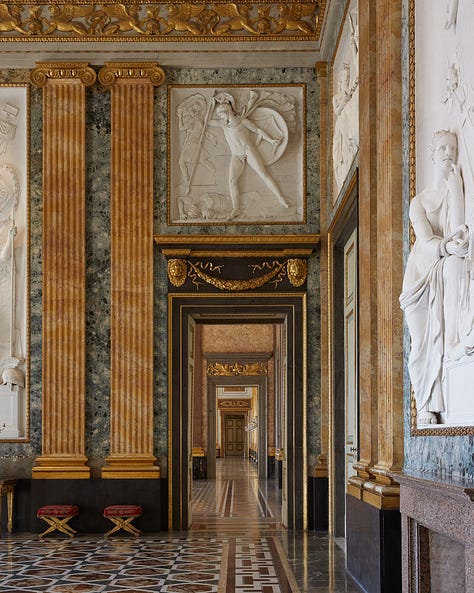
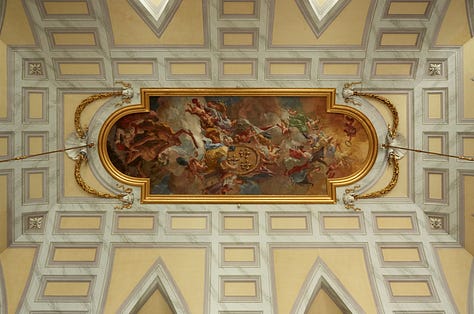
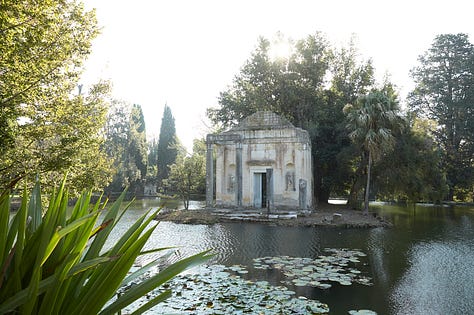
One final tidbit I can’t stop thinking of is the way Lagnese combines some of his photographs to create this dream-like landscapes. I’m not sure if these are film photographs or shot digitally and altered in post? Regardless, I could picture these used as the backdrop of a mystical, magical, Mediterranean brand campaign or wedding shoot…
Villa La Saracena
Making our way from Campania up the coast to Villa La Saracena on the Tyrrhenian coast just north of Rome.
I discovered this modernist gem via Luke Edward Hall, the illustrator and artist who launched a Ginori collaboration at the villa last month. His description of the space as follows:
Villa La Saracena, perched on the Tyrrhenian coast close to Rome, was commissioned in 1955 by the journalist Francesco Malgieri for his daughter Luciana Pignatelli d’Aragona Cortez, and designed by Luigi Moretti.
The house was conceived as a long path extending toward the sea - all very, very beautiful. But for me the most exciting thing about this house was the enameled and painted tiled flooring. The floors throughout the villa in shades of lemon, pistachio and soft pink were created and decorated with flowers by the Neapolitan painter Grisotti. Such a wonderful contrast with the building’s white walls and sharp lines. Incredible, actually! Also… that chair.
The chair in question is, of course, delicious. The colour palette of the villa and the ornate details remind of one of the pastries you might find in a glass-fronted pastel cabinet in Wes Anderson’s Bar Luce.

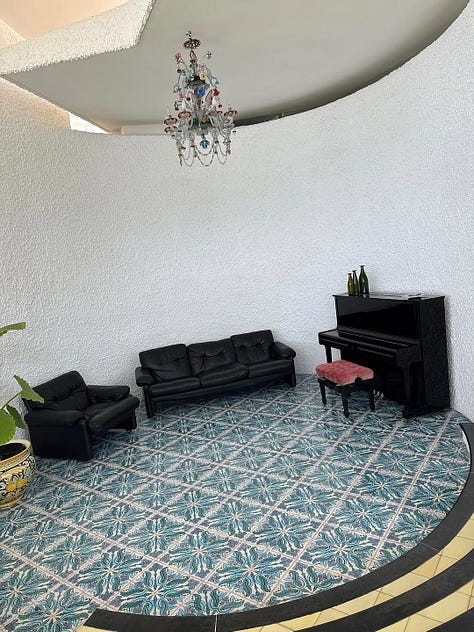
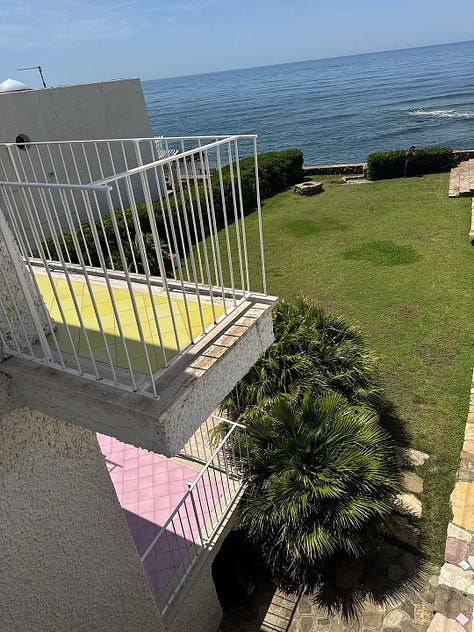
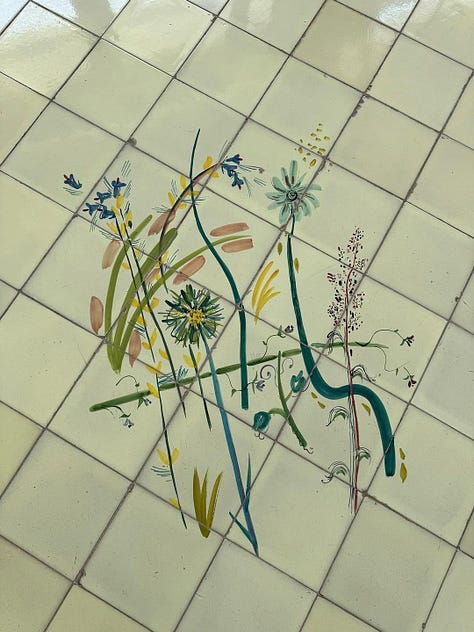
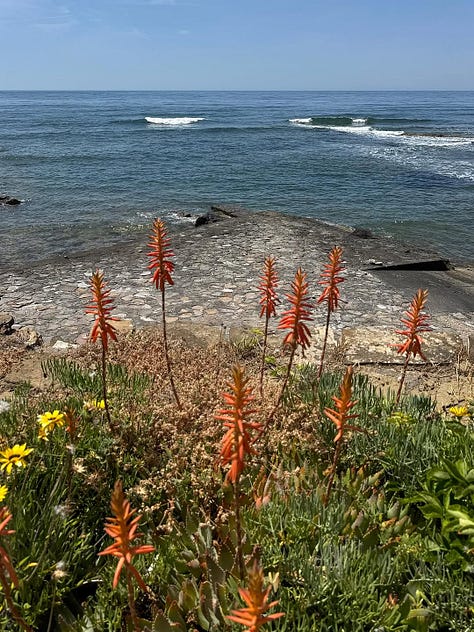
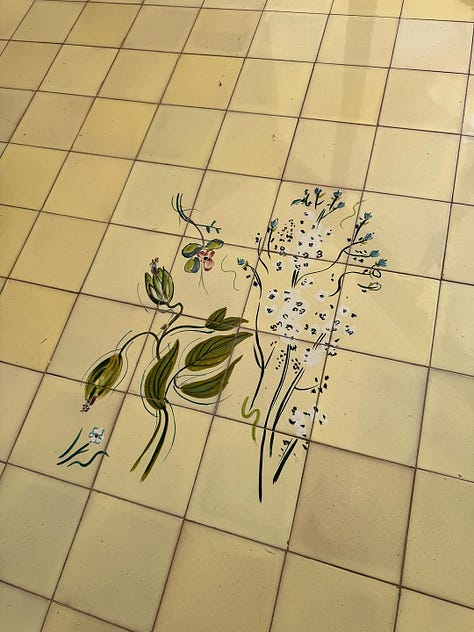
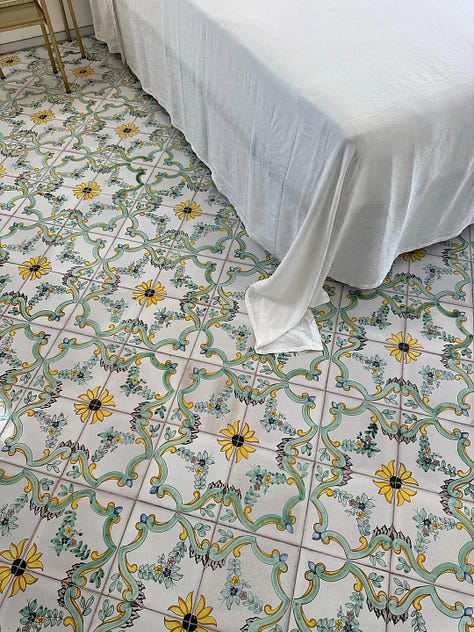
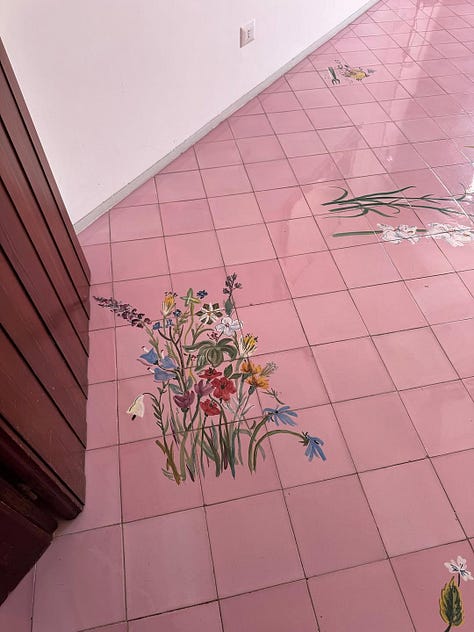
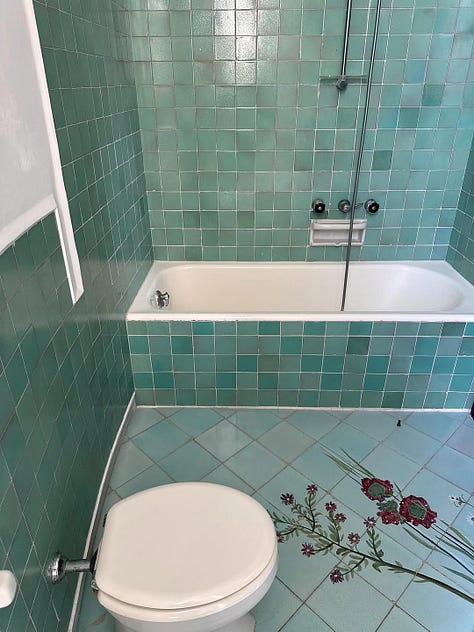
Of course, my own sensibilities love the combination of pastel details with the expansive lines, rounded forms, and textured white walls that feel distinctly modern.
The amazing textured white walls were made from a mixture of marble powder, white cement, and slaked lime applied with a broom by a single craftsman. I love how the Moretti describes the villa’s ‘emotional’ architecture which he wanted to feel deliberately imperfect:
The whole house is as if immersed in a dreamlike atmosphere. The surface of all its walls is rough as if it had been stuck for centuries in a strange and luminous sea. In the House of Santa Marinella one can directly read the emotional qualities of the walls as such, that is, as weight, as a tapered design with decreasing loads, as a force of support and division of spaces.
The villa was carefully restored after decades of decay in the 2010s by the architect Paolo Verdeschi and can now be booked as an event venue (they also have an Instagram!), just in case anyone is looking for their next birthday/wedding/christening/backyard BBQ location.
Finally, Alekos Fassianos brought to life by Svenskt Tenn
I discovered Alekos Fassianos this past week while doing some research and digital perusing of modern Greek art. I was immediately struck by his exaggerated and highly stylised use of colour, form, and classical motifs.
The texture! The colour! The scale! The detail!
Scrolling my way through Fassianos’ works felt like when you have déjà-vu. Surely I must have seen these works somewhere I thought to myself?! As someone with tattoos of both archaeological vases alongside and modern sketches from Picasso and Matisse, Fassianos’ work felt deeply personal. His Byzantine and classical influences combined with modern line-work and abstraction could not be closer to my dream artistic combination.
The Hellenic Foundation has a wonderful biography on Fassianos:
Born in Athens in 1935, Alekos Fassianos was an emblematic figure of the Greek 20th century art scene and one of Greece’s most celebrated painters. He passed away on January 16 2022.
Fassianos's interests and talents were seemingly marked from an early age; his father was a music teacher and composer while his mother, who had a keen interest in history, taught ancient Greek and took the children to archaeological sites. His grandfather's influence was most keen, and it was he who encouraged Fassianos to pursue art. In 1945, amidst the horrors of the Second World War and the Greek Civil War, Fassianos began to paint […]
Fassianos’ artistic style, which began as abstract and later expressionist painting, evolved into his recognisable signature style of flat, solid coloured silhouettes, which have made him one of the most easily recognised and beloved Greek artists. He drew his subjects from Greek myths, Byzantine icons and coins, Fayum portraits, the Shadow Theatre and the Greek cultural and geographical landscape.
Fassianos is apparently often called the Picasso of Greece because of the distinctiveness of his colourful work as well as the national pride Greece feels for the artist who has had numerous solo exhibitions in top museums and whose designs have often appeared in product or commercial partnerships.
The latest of these partnerships is between the artist’s estate and the Swedish interior design company Svenskt Tenn which use Fassianos’ deliciously bold and bright designs in a collection of home decor.
Fassianos’ iconic bird pattern (a symbol of escape, according to the artist) and profile portraits are splashed across cushions and tableware. I can already picture a tablescape set with the white and blue trays, lots of crisp white linen, the Anakreon chairs*, and cold bottles of wine overlooking a sun-drenched Mediterranean sea.
I’ve made a moodboard below capturing what that dinner might look like… get me to a Greek island, stat!
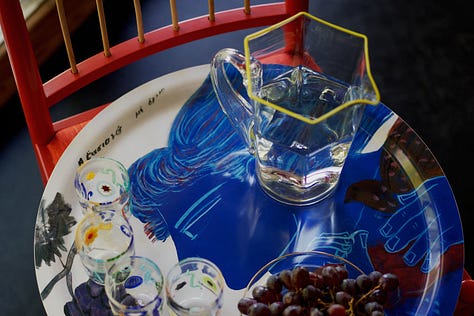
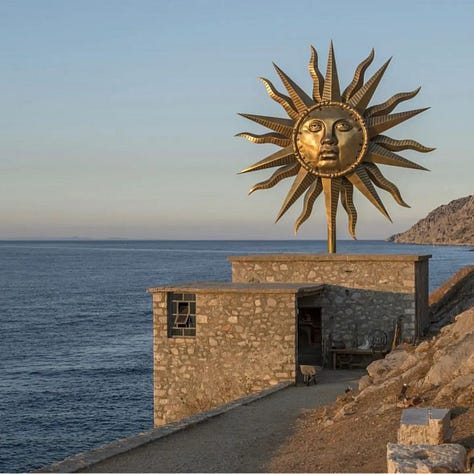
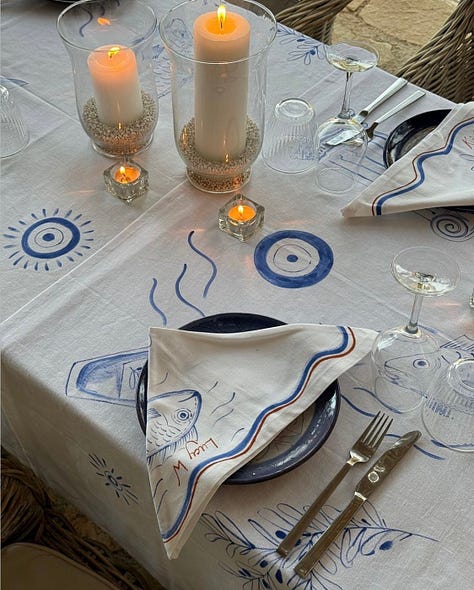
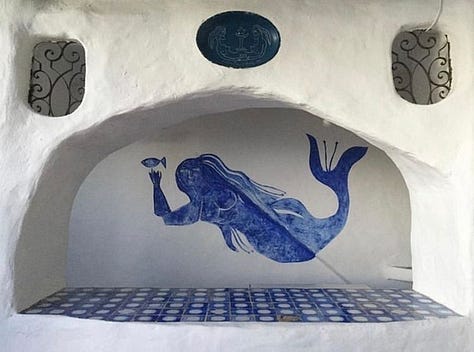
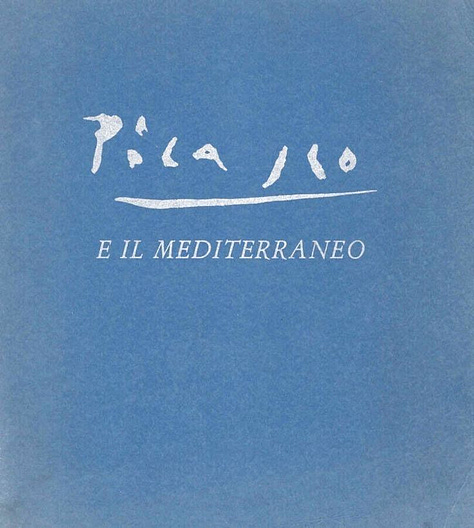
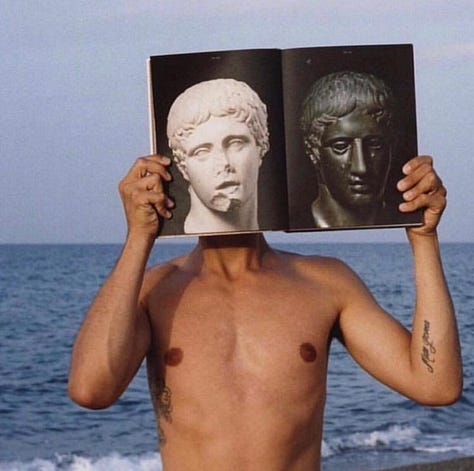
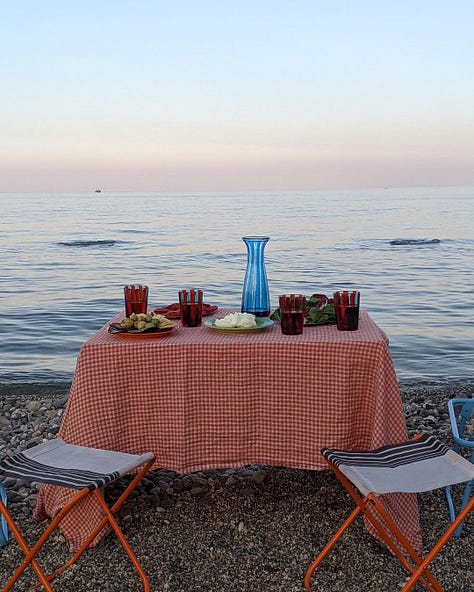
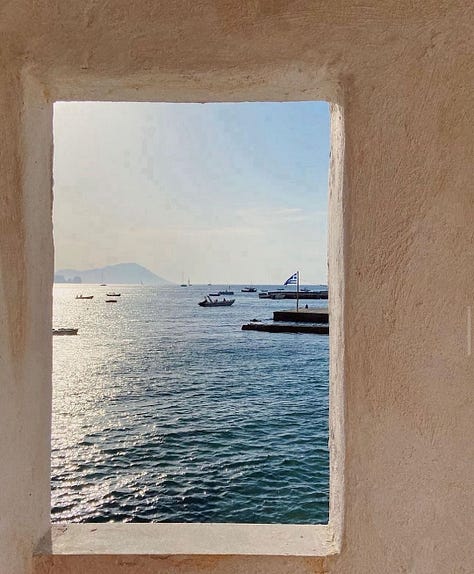
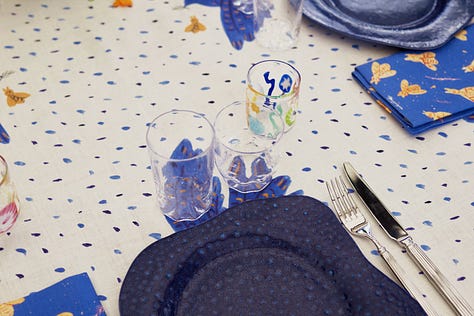
I love how the mood and hues of Fassianos’ works reflect the Greek geography that shaped his childhood. On this note, I will leave you with Fassianos’ own comment on colour:
Colour should always have meaning!
Alekos Fassianos, Athens 1964
*If anyone is interested in who Anakreon is, I had an undergraduate paper published on Anakreon, an archaic Greek poet writing in the 6th century BCE. He loved writing about wine, love, feasting, and general finery so I’m sure he’d approve of both Fassianos and my dinner party moodboarding.
🩵 That’s it for this week! ꩜꩜꩜Avery






